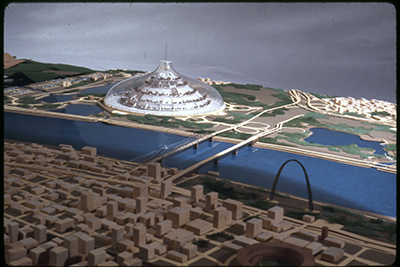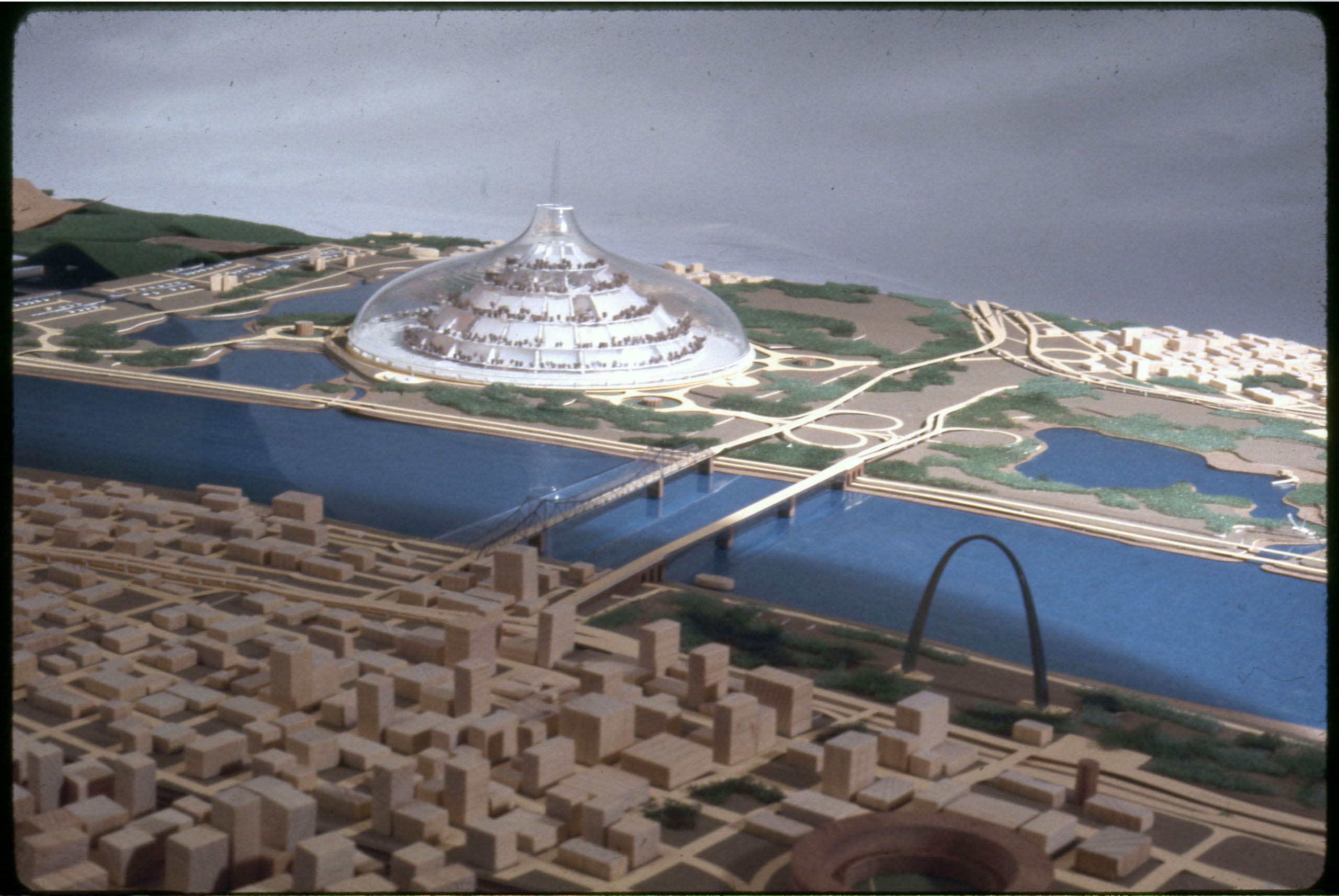



Here, in the jumble of old rail lines, depot foundations, sodden backwaters, and resurgent lowland forests, is the proposed site of one of the region’s most ambitious architectural visions. In 1954, R. Buckminster Fuller—father of the geodesic dome, synergetics, and professor at Southern Illinois University–Carbondale, just down the road—was invited by prominent African American dancer Katherine Dunham to assess the urban situation of East St. Louis and to bring to this assessment his visionary approach to rethinking urban systems. The project that he proposed, called Old Man River, called for a massive, crater-like structure, capped by a 1000-foot-high, quarter-round geodesic sky dome. Old Man River was designed to house 125,000 people in what Bucky called “an entirely feasible and practical way for humans to live together economically.” With the entire existing city supporting a population of 70,000 at the time, Bucky was essentially calling for the demolition of it and its “obsolete” infrastructure, and the reinhabitation of his one-mile-wide, 50-story-high city architecture. Despite the support of State Representative Wyvetter Younge and other prominent East St. Louisans, early community meetings heard vocal dissent to the effect that the massive, one-mile-wide steel and glass dome covering the entire project was yet another effort to entrap the mostly African American residents of the city. Yet despite the community resistance, Fuller and his supporters continued to advocate for the manacle project for decades.
Image courtesy Missouri History Museum